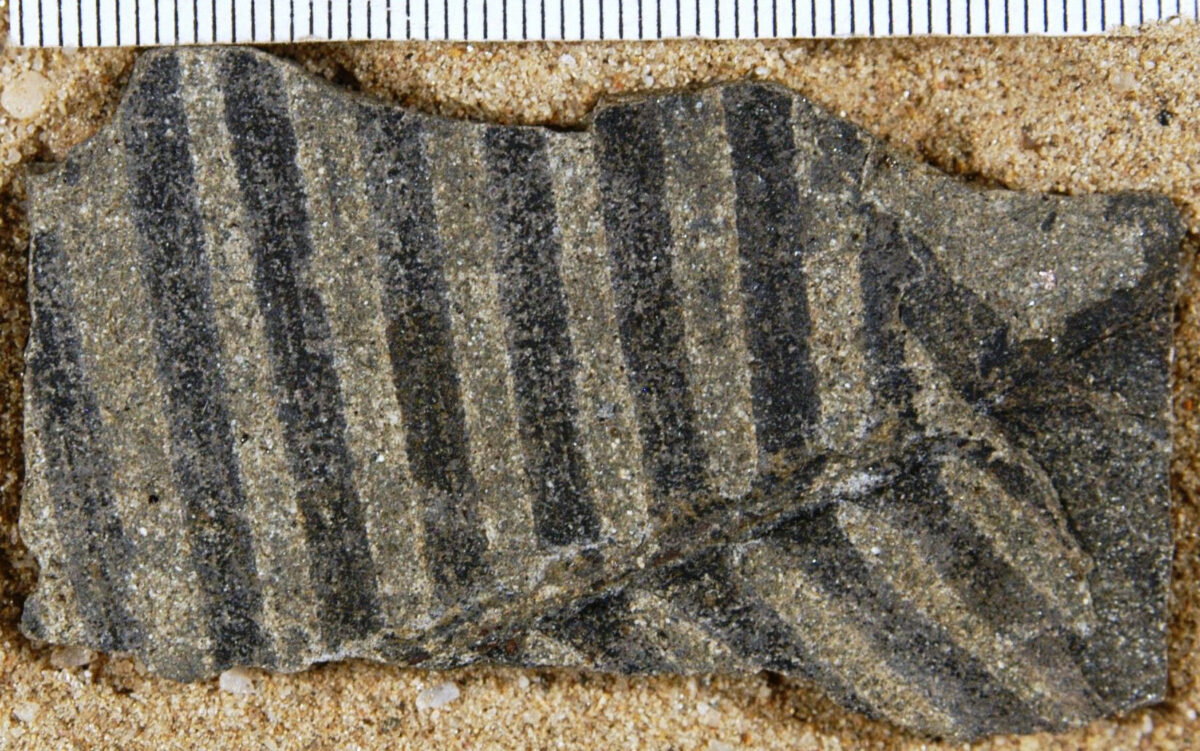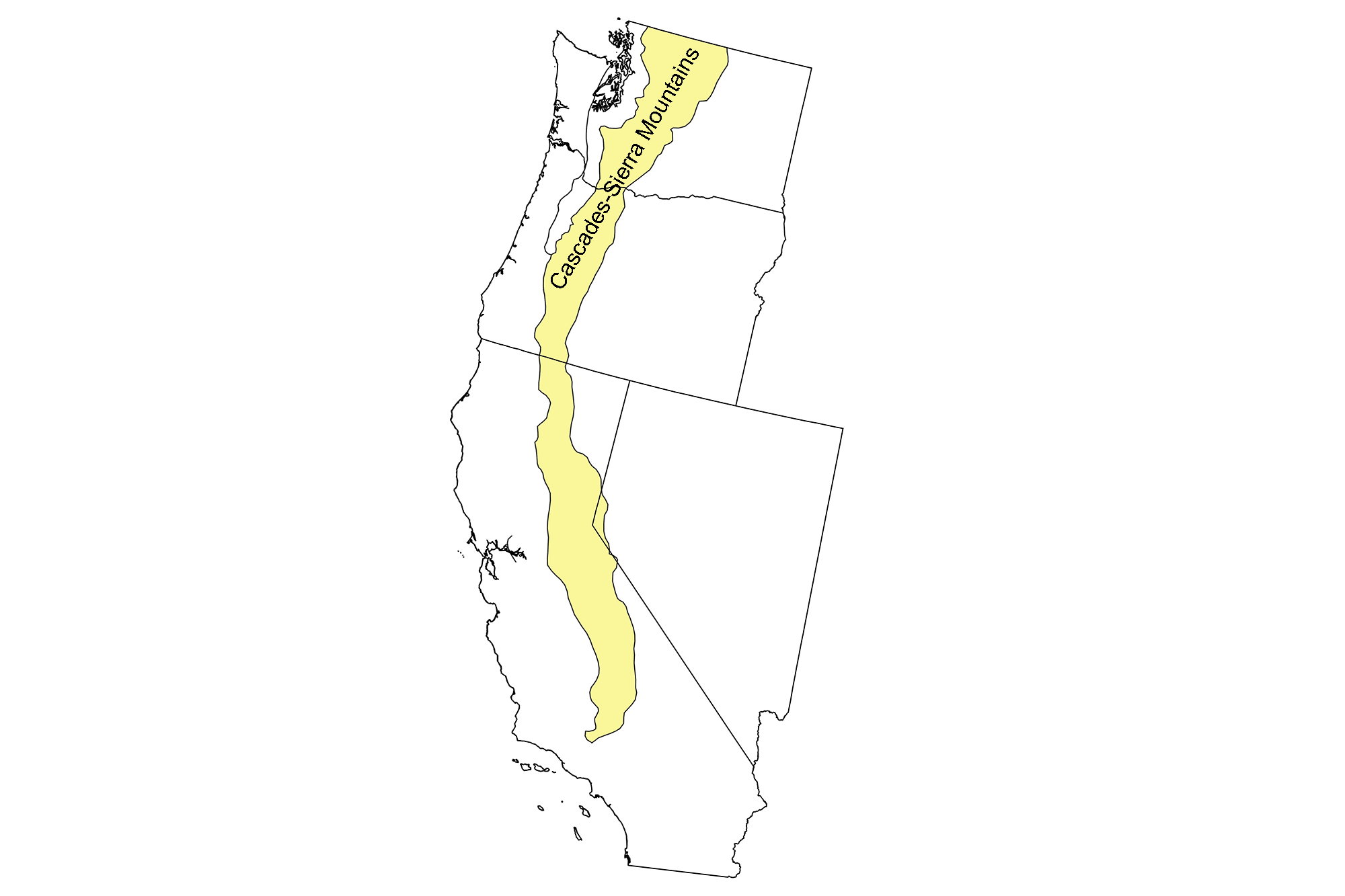
Page snapshot: Introduction to the fossils of the Cascade-Sierra Mountain region of the western United States.
Topics covered on this page: Paleozoic fossils; Mesozoic fossils; Triassic marine fossils; Cretaceous plant fossils; Cenozoic fossils; Paleogene fossils; Neogene fossils; Resources.
Credits: Most of the text on this page comes from "Fossils of the Western US" by Brendan M. Anderson, Alexandra Moore, Gary Lewis, and Warren D. Allmon, chapter 3 in The Teacher-Friendly Guide to the Geology of the Western US, edited by Mark D. Lucas, Robert M. Ross, and Andrielle N. Swaby (published in 2014 by the Paleontological Research Institution; currently out of print). The book was adapted for the web by Elizabeth J. Hermsen and Jonathan R. Hendricks in 2022. Changes include formatting and revisions to the text and images. Credits for individual images are given in figure captions.
Updates: Page last updated September 1, 2022.
Image above: Portion of a cycad leaf (Pseudocycas insignis) from the Early Cretaceous Winthrop Formation, Washington. Photo of YPM PB 160796 by Yale Peabody Museum of Natural History, Division of Paleobotany, Yale Peabody Museum 2015 (CC0 1.0 Universal/Public Domain Dedication, accessed via GBIF.org).
Paleozoic fossils
Permian-age rocks in the northern Cascades contain gastropods and corals, along with fusulinid foraminifera shells. Fusulinids are the rice-sized shells of single-celled, amoeba-like organisms that lived in huge numbers on the sea floor during the late Paleozoic.
Mesozoic fossils
Triassic marine fossils
Triassic rocks found in the Cascades and Sierra Nevada contain abundant ammonoids and nautiloids, as well as brachiopods and oysters. These occur, for example, in Shasta County near the border between the Cascade-Sierra Nevada and Pacific Border Regions. For more information, see Fossils of the Pacific Border.

Thalattosaurus alexandrae, an extinct reptile named Annie Alexander, an heiress who financed the creation of the University of California Museum of Paleontology. Left. Drawings of the skull. Source: Merriam (1905) Memoirs of the California Academy of Sciences, vol. 5 (Wikimedia Commons). Right: Reconstruction of the living animal by Nobu Tamura (Wikimedia Commons, Creative Commons Attribution-ShareAlike 4.0 International license, image cropped).
Cretaceous plant fossils
The Early Cretaceous Winthrop Formation in Okanogan County, Washington, preserves a diversity of plant fossils. These include horsetails, ferns, cycads, cycadeoids, ginkgoes, pteridosperms (seed ferns), and conifers.

An ancient horsetail stem (Neocalamites vaganta) from the Early Cretaceous Winthrop Formation, Washington. Image of YPM PB 160766 by Yale Peabody Museum of Natural History, Division of Paleobotany, Yale Peabody Museum 2015 (CC0 1.0 Universal/Public Domain Dedication, accessed via GBIF.org).
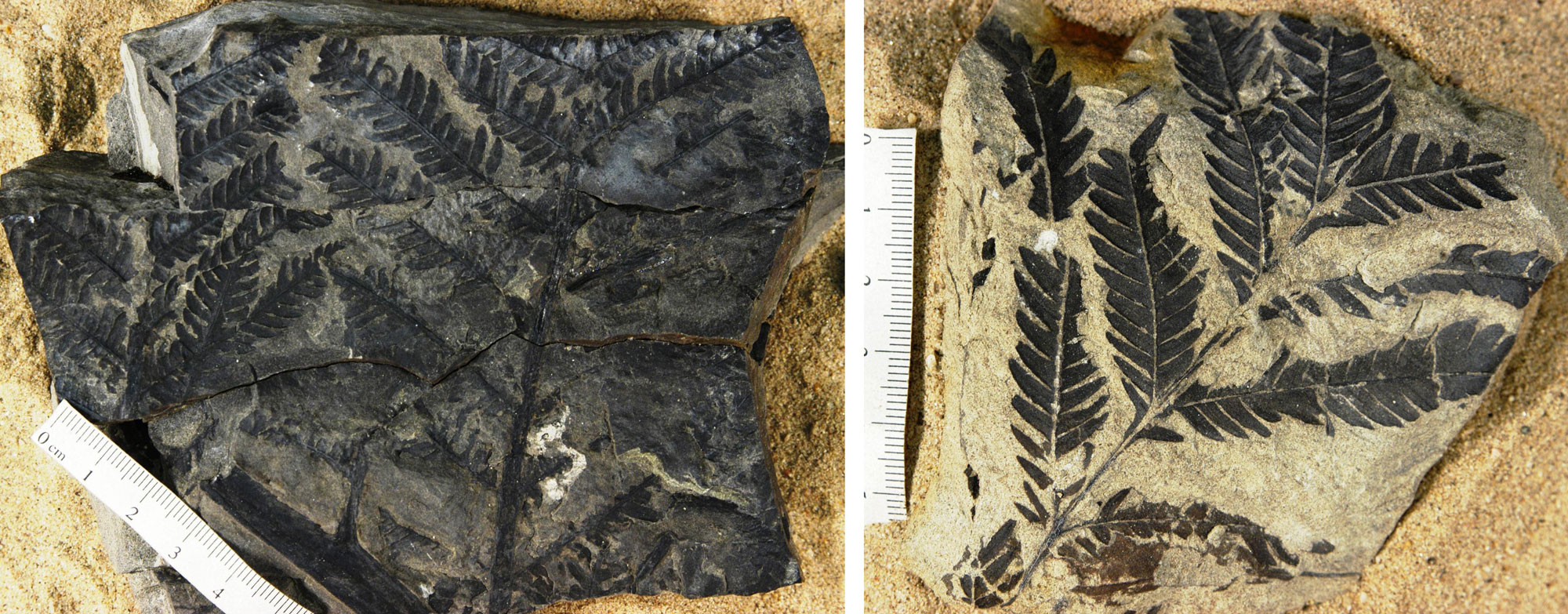
Fern fronds (leaves) from the Early Cretaceous Winthrop Formation, Washington. Left: A frond from a member of the royal fern family (Cladophlebis methowensis, Osmundaceae). Right: A frond (Calcaropteris boeselii) from a member of the order Gleicheniales, which includes the forked ferns and umbrella ferns. Images of YPM PB 160775 and YPM PB 160726 by Yale Peabody Museum of Natural History, Division of Paleobotany, Yale Peabody Museum 2015 (CC0 1.0 Universal/Public Domain Dedication, accessed via GBIF.org).
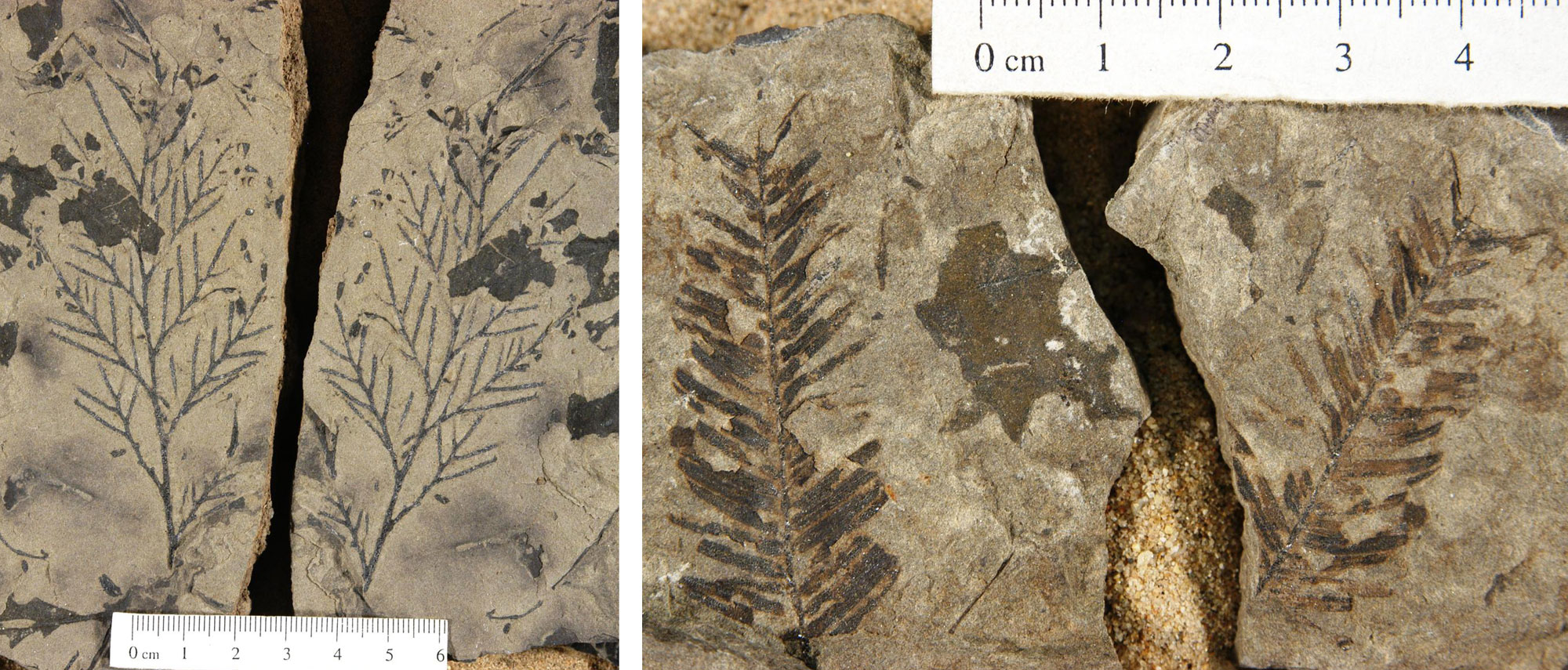
Conifer branchlets and leaves from the Early Cretaceous Winthrop Formation, Washington. Left: Sphenolepsis condita. Right: Elatocladus gracilis. Images of YPM PB 160858 and YPM PB 160863 by Yale Peabody Museum of Natural History, Division of Paleobotany, Yale Peabody Museum 2015 (CC0 1.0 Universal/Public Domain Dedication, accessed via GBIF.org).

Leaves of seed plants from the Early Cretaceous Winthrop Formation, Washington. Left: Ginkgo leaf (Ginkgo adiantoides). Right: Part of a seed fern leaf (Sagenopteris nilssoniana). Seed ferns are ancient seed-producing plants with fern-like leaves. Images of YPM PB 160843 and YPM PB 160799 by Yale Peabody Museum of Natural History, Division of Paleobotany, Yale Peabody Museum 2015 (CC0 1.0 Universal/Public Domain Dedication, accessed via GBIF.org).
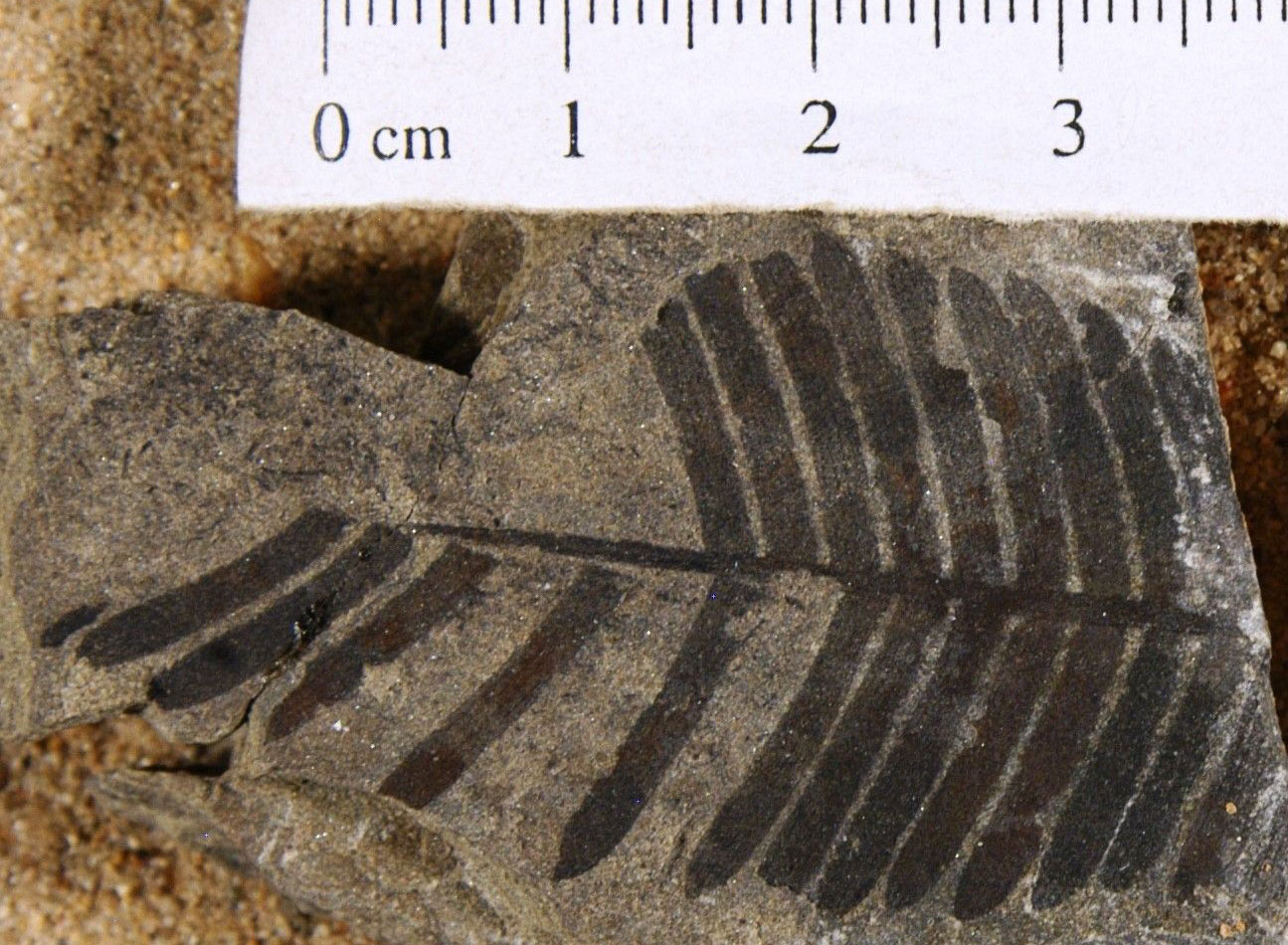
Part of a leaf of a cycadeoid (Pterophyllum rectangulari), Early Cretaceous Winthrop Formation, Washington. Cycadeoids are an extinct group of plants that looked somewhat like, but which are unrelated to, palms. Palms are flowering plants, whereas cycadeoids are not. Image of YPM PB 160791 by Yale Peabody Museum of Natural History, Division of Paleobotany, Yale Peabody Museum 2015 (CC0 1.0 Universal/Public Domain Dedication, accessed via GBIF.org).
Cenozoic fossils
Paleogene fossils
Freshwater aquatic animals, trackways, and fossil plants are preserved in Eocene rocks of the Chuckanut Formation and other Eocene formations in northwestern Washington, near the boundary between the Pacific Border and the Cascade-Sierra Mountains regions. These are covered in the Fossils of the Pacific Border.
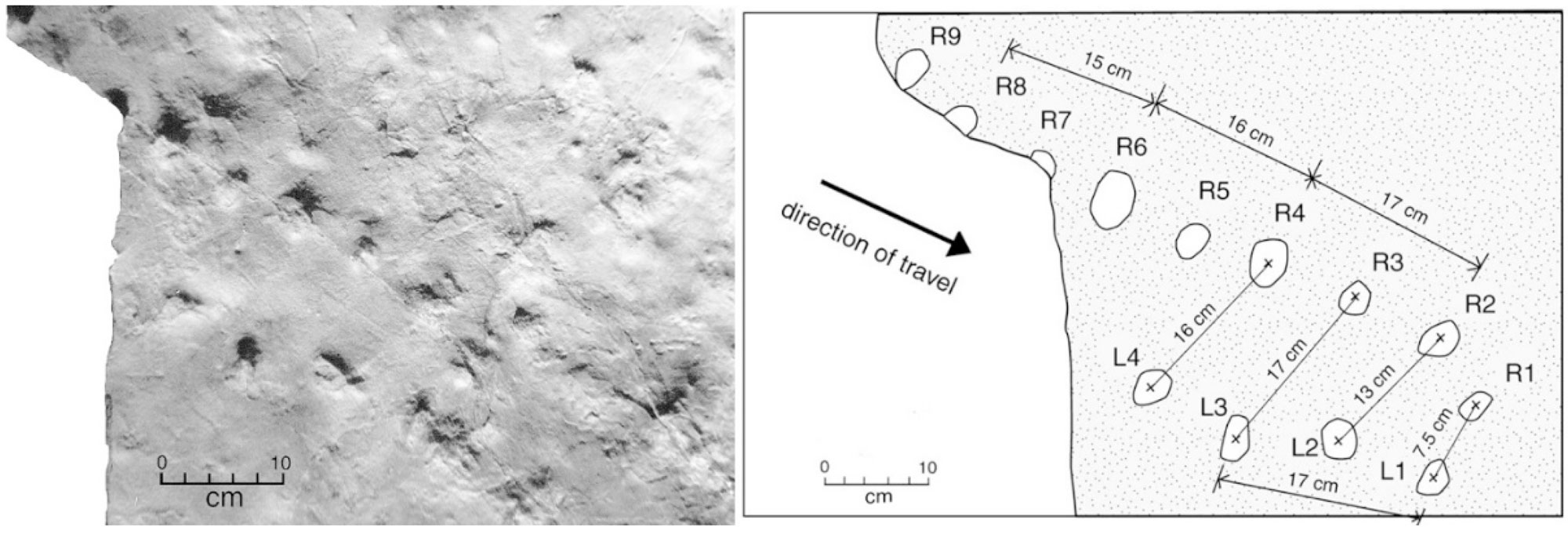
A turtle trackway Eocene Chuckanut Formation, Whatcom County, Washington. Left is a photo of the trackway, right is an illustration interpreting the trackway (R = right legs, L = left legs). Source: From Figure 7 in Mustoe (2019) Geosciences 9(7): 321 (Creative Commons Attribution 4.0 International license, image cropped).
Neogene fossils
Most Neogene fossils from the Cascades represent terrestrial forest and grassland communities. Fossil plants include petrified wood from willow, yew, swamp cypresses, and dawn redwoods (Metasequoia).
Fossil vertebrates are less common, but include rabbits, beavers, camels, and the extinct horses Parahippus, Archaeohippus, and Merychippus. Merychippus was about 90 centimeters (3 feet) tall and had three toes, as opposed to the single toe found in modern horses. It is also the first horse known to have primarily grazed on grasses, rather than to have browsed on shrubs, as earlier horses did.
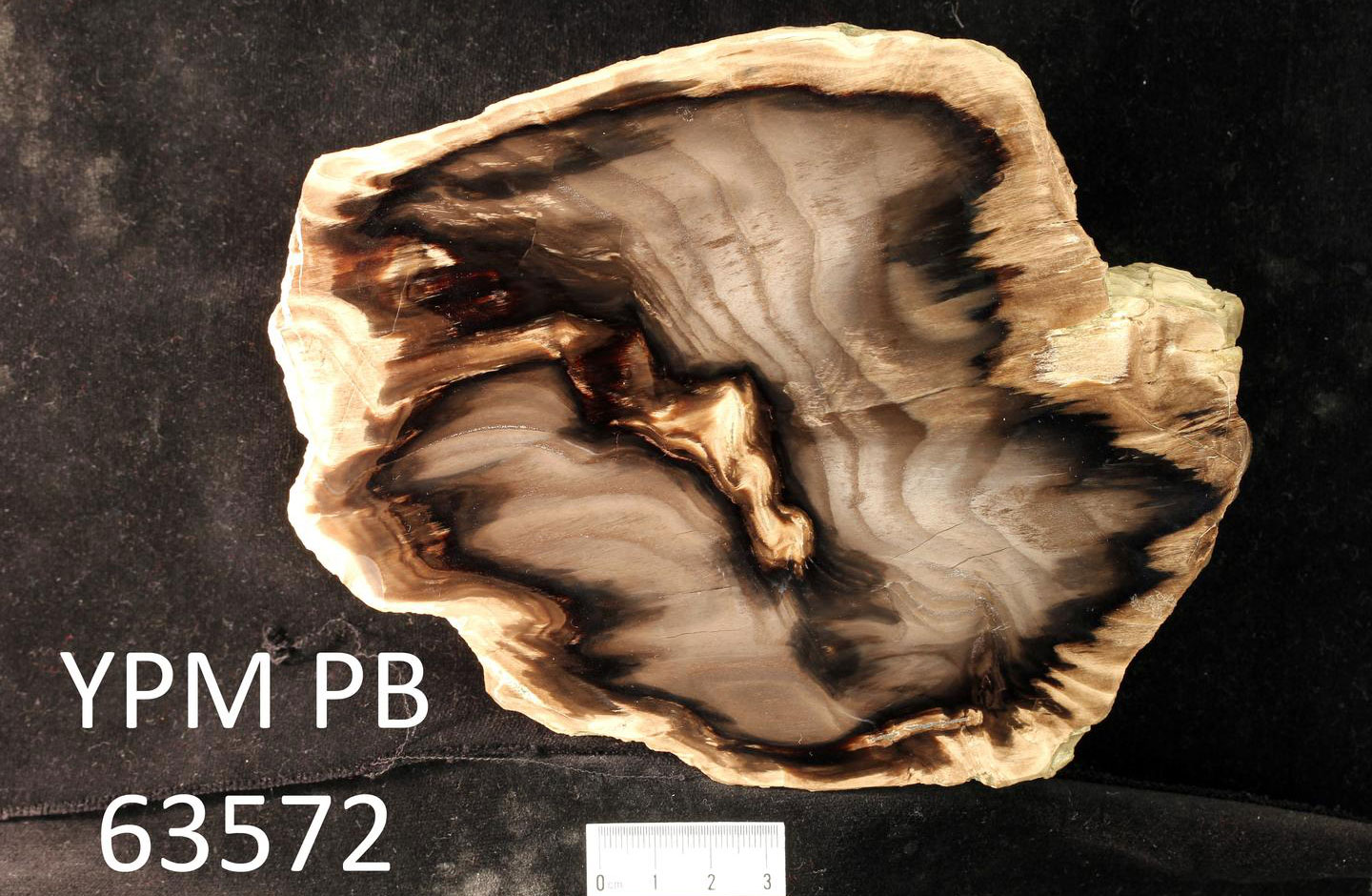
Petrified wood (possibly redwood, Sequoia) from the Oligocene of Jackson County, Oregon. Photo by Jessica Utrup, 2016 (Yale Peabody Museum of Natural History/YPM, CC0 1.0 Universal/Public Domain Dedication, accessed via GBIF.org).
Resources
Resources from the Paleontological Research Institution
Digital Atlas of Ancient Life Virtual Collection: https://www.digitalatlasofancientlife.org/vc/ (Virtual fossil collection featuring 3D models of fossil specimens sorted by group)
Digital Encyclopedia of Ancient Life: https://www.digitalatlasofancientlife.org/learn/
Earth@Home: Quick guide to common fossils: https://earthathome.org/quick-faqs/quick-guide-common-fossils/



